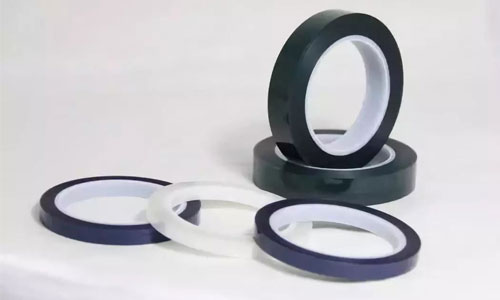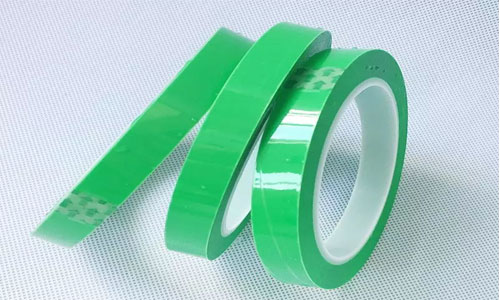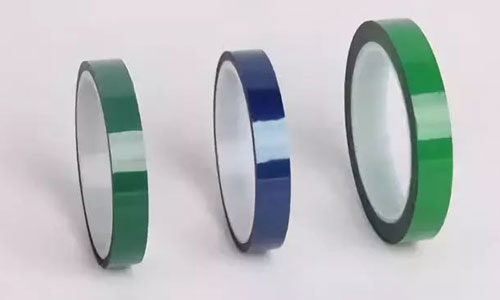Adhesive tapes may seem simple, made of a thin film coated with adhesive, but in fact, they are designed to meet the special requirements and environments of lithium battery production. Lithium battery tapes and lithium protection film tapes are made with different materials, various adhesives, primers, isolating agents, and other treatments to create different characteristics to meet various needs. High-quality tapes reflect complex processes and cutting-edge science in terms of material, manufacturing, and inspection.
Lithium battery tapes and lithium protection film tapes are made with different materials, adhesives, primers, and isolating agents to create different characteristics to meet various needs. Lithium battery tapes can generally be categorized into the following types based on different requirements:

- Lithium battery tapes classified by substrate materials: PET, PI;
- Lithium battery tapes classified by adhesive types: acrylic series, organosilicone pressure-sensitive adhesive series, rubber pressure-sensitive adhesive series, etc.;
- Lithium battery tapes classified by applications: termination tapes, PACK tapes, protection film tapes, tab tapes, high-temperature tapes, fixation tapes, repositionable tapes, double-sided tapes, etc.
Common lithium battery tapes include:
- Cell (digital) termination tape: Used for insulating and fixing the terminal and winding positions of cylindrical, square, small and medium-sized lithium-ion batteries, and large-sized power lithium-ion batteries, serving to terminate and prevent punctures.
- PACK high-temperature tape: Used for insulation protection and bundling fixation of sealing edges and bottom of lithium battery steel casings, aluminum casings, cylindrical batteries, pouch cells, and power battery cells.
- Tab tape: Used for the tabs of lithium battery steel casings, aluminum casings, pouch cells, cylindrical batteries, etc. It wraps the ultrasonic welds to prevent puncturing the separator and causing short circuits, withstanding high temperature and resistance to electrolyte corrosion, preventing an increase in internal impedance.
- MERA tape: Used for attaching black, red, and blue adhesives on the top and bottom of cylindrical batteries during various battery PACK processes.

- Fiberglass tape: The unique pressure-sensitive adhesive layer has excellent adhesion and special properties, excellent alkali resistance, high tensile strength, deformation resistance, excellent self-adhesiveness, thermal insulation, and high-temperature resistance. Used for bundling and protection of small power batteries.
- Crepe paper tape: Mainly used for top sealing during the cell injection process, with good adhesion and high-temperature resistance.
- Selection of lithium battery tapes:
When selecting lithium battery tapes, we first need to determine if the tape has insulation and fixing functions, providing insulation protection and fixing for various lithium-ion battery cells.
Secondly, the selection of lithium battery tapes is similar to that of regular tapes. If the tape has a strong odor and smells acidic, its adhesion is very poor. Especially in low-temperature environments, it tends to crack or peel off when applied to lithium-ion products. The stronger the odor, the stronger the initial adhesive strength, but it quickly loses adhesion as the tape surface becomes dry. In this case, cracks may appear on the tape surface, which is related to uneven adhesive coating.
Usually, the film color of poor-quality tape is dark, making it highly likely to break and with poor strength. Tape with a hard film is generally of lower quality, and due to its greater thickness, the actual length per roll is reduced. Good tapes use thinner films that are more flexible and stretchable when pulled by hand. Transparent tapes with whiter appearance have fewer impurities, ensuring normal adhesion. Transparent tapes under 100 meters have a certain degree of transparency, allowing the paper tube to be visible. For yellow tapes, check if there are irregular white spots on the tape surface that cannot be wiped off by hand pressure, which may be impurities or marks from dried adhesive. These typically come with an unpleasant odor.

Micro-porosity of the material to be adhered: The adhesion of a tape occurs when the moisture of the adhesive on the tape surface permeates into the material to be adhered and dries quickly, making the tape become part of the material. Therefore, the micro-porosity of the surface of the material to be adhered is crucial for tape selection. If the material has more micro-pores or has stronger moisture absorption, a tape with adhesive that condenses quickly must be used. On the contrary, a tape with slower condensation speed or more adhesive content should be used.
Adhesive on the tape surface: Usually, the tape is rolled up after the adhesive has dried completely. If the adhesive is too moist, the tape will stick tightly together, making it difficult to open and might render it unusable.
Contact: Pamela
Phone: +86 189 6365 3253
E-mail: info@industryprocess.com
Whatsapp:+86 189 6365 3253
Add: Yajing Industrial Park, No. 59 Shuangjing Street, Weiting Town, Suzhou Industrial Park
We chat
